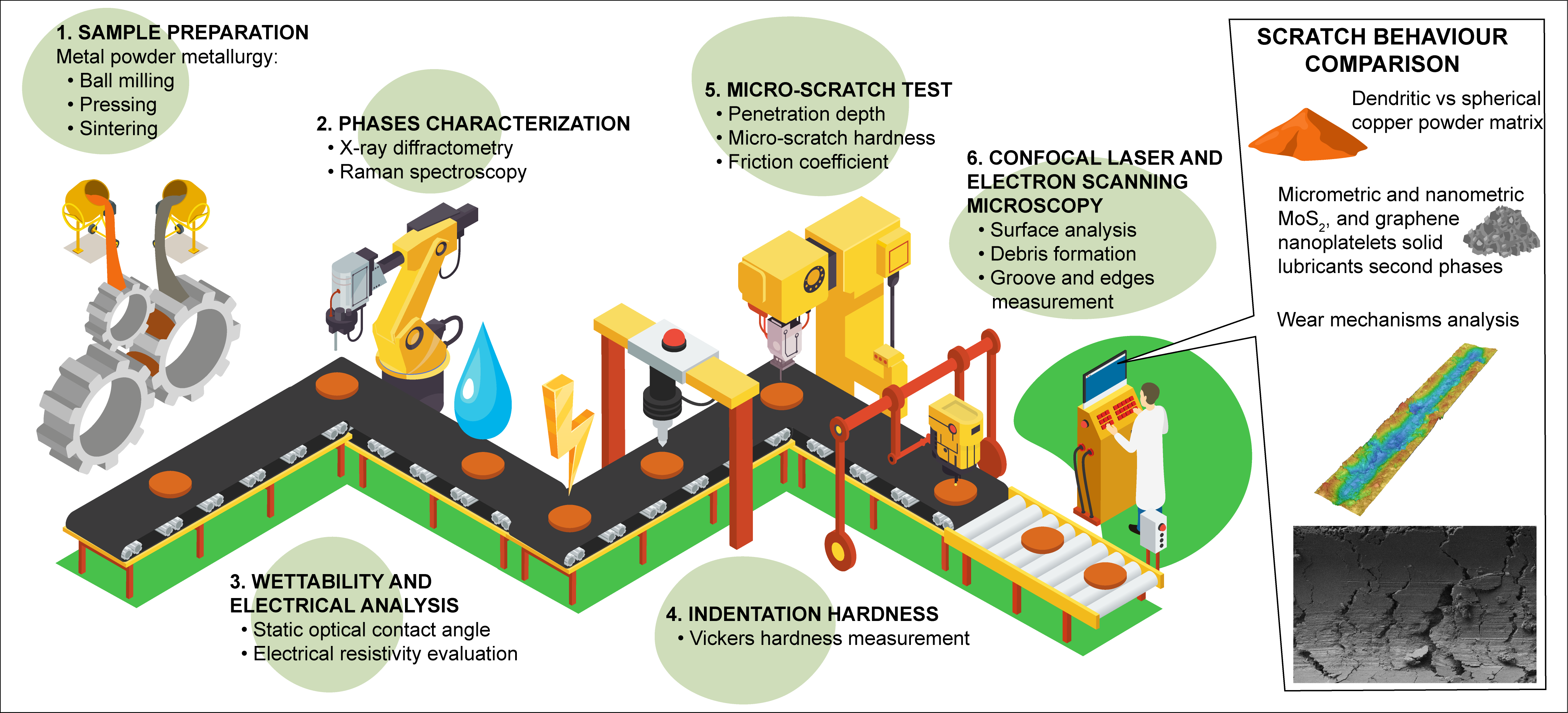M. Freschi, A. Arrigoni, O. Haiko, L. Andena, J. Kömi, C. Castiglioni, G. Dotelli
Lubricants, 10(3) (2022), 35
https://doi.org/10.3390/lubricants10030035
Innovative nanostructured materials offer the possibility of enhancing the tribological performance of traditional materials like graphite and molybdenum disulfide (MoS2). In this study, the scratch resistance of two different copper powders, dendritic and spherical, and their composites with traditional MoS2, nanometric MoS2, and graphene nanoplatelets was investigated. Metal powder metallurgy was employed to produce composite materials with 5 wt% and 10 wt% of each solid lubricant. A ball milling step was employed to grind and mix the matrix copper powder with the lubricants. The use of a cold press combined with the sintering in inert atmosphere at 550 °C limited the oxidation of the copper and the degradation of the solid lubricants. The so-produced materials were characterized through a variety of techniques such as micro-indentation hardness, electrical resistivity, contact angle wettability, X-ray diffraction, Raman scattering, and scanning electron microscopy. Moreover, micro-scratch tests were performed on both pure copper and composite materials for comparing the apparent scratch hardness and friction coefficients. The scratches were examined with confocal laser scanning microscopy (CLSM), to identify the evolution of the damage mechanisms during the formation of the groove. The results highlighted the important difference between the dendritic and spherical copper powders and demonstrated a way to improve wear behavior thanks to the use of nanometric powders as solid lubricants.

